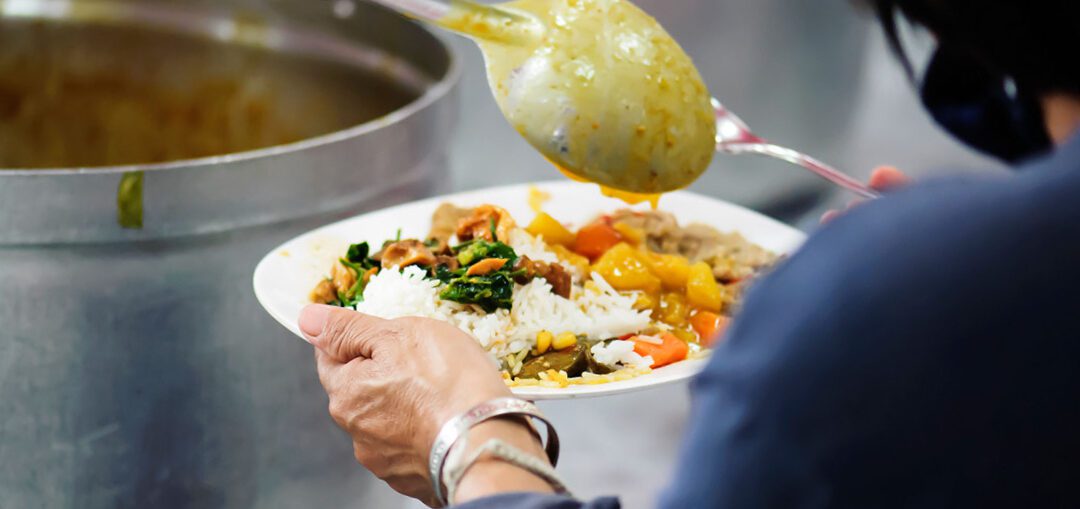
In a world where many people struggle to put food on the table, community meal programs can be a lifeline. These programs provide a shared dining experience for those in need, offering nourishment and a sense of community. However, organizing a successful community meal program is no small feat. It requires careful planning, dedication, and the support of volunteers and donors. In this article, we’ll explore some tips and concrete examples to help you organize a community meal program that is both effective and sustainable.
- Identify the Needs of Your Community
The first step in organizing a community meal program is to identify the needs of your community. This will involve researching the demographic makeup of your community and assessing the level of need. Consider factors such as poverty rates, food insecurity, and the availability of other food resources in your area. This information will help you determine the scope and scale of your program.
For example, if you live in an area with a high poverty rate, you may need to provide meals more frequently or offer additional services, such as nutrition education or job training. On the other hand, if your community has a strong network of food banks and other resources, you may be able to focus on providing a more specialized service, such as meals for seniors or homeless individuals.
- Create a Plan
Once you have a clear understanding of the needs of your community, it’s time to create a plan. This plan should outline your goals, budget, and timeline, as well as the resources you will need to make your program a success.
Consider factors such as the size of your program, the number of meals you will serve, and the equipment and supplies you will need. You’ll also need to consider the logistics of your program, such as how you will prepare and serve the meals, how you will transport the food, and how you will manage volunteers and donors.
- Build a Network of Volunteers and Donors
Community meal programs rely heavily on the support of volunteers and donors. Start by reaching out to local churches, schools, and other community organizations to recruit volunteers. You can also post volunteer opportunities on social media and other online platforms.
To attract donors, consider hosting a fundraising event or starting a crowdfunding campaign. You can also reach out to local businesses and community leaders to request donations of food, equipment, and supplies.
- Create a Welcoming Environment
The success of your community meal program will depend, in large part, on the environment you create. Make sure that your dining space is clean, comfortable, and welcoming. You can also decorate the space with art, music, or other elements that reflect the culture and traditions of your community.
Additionally, make sure that your volunteers are trained to be welcoming and inclusive. This may involve providing training on cultural sensitivity, communication skills, and conflict resolution.
- Offer Nutritious Meals
One of the key goals of a community meal program is to provide nutritious meals to those in need. Make sure that your meals are balanced and include a variety of fruits, vegetables, whole grains, and lean proteins. You can also offer vegetarian or vegan options, as well as meals that cater to specific dietary needs, such as gluten-free or low-sodium.
- Provide Additional Services
In addition to providing meals, you can also offer additional services that can help improve the well-being of your community. This may include nutrition education, job training, health screenings, or social services referrals. By providing these services, you can help empower your community members and provide them with the resources they need to thrive.
- Evaluate Your Program
Finally, make sure to regularly evaluate your program to ensure that it is meeting the needs of your community. This may involve collecting feedback from participants, tracking attendance and meal consumption, and assessing the impact of any additional services you offer. Use
this information to make any necessary adjustments to your program and ensure that it remains effective and sustainable over the long term.
Concrete Examples:
To provide more specific examples of community meal programs in action, here are three different programs that are making a difference in their communities:
-
The Lord’s Kitchen in Sacramento, California – This program provides hot meals to homeless and low-income individuals in Sacramento seven days a week. In addition to providing meals, the program also offers a clothing program, a hygiene program, and a medical clinic. The Lord’s Kitchen relies on volunteers and donations from the community to make their program possible.
-
The Community Table in Eau Claire, Wisconsin – This program provides free weekly meals to anyone in need in the Eau Claire community. The program operates entirely on volunteers and donations, and serves an average of 200 people per week. In addition to providing meals, The Community Table also offers a food pantry and cooking classes.
-
The Welcome Table in Knoxville, Tennessee – This program provides a free weekly meal and a sense of community to anyone in need in Knoxville. The program is run by volunteers and funded by donations from the community. In addition to providing meals, The Welcome Table also offers music and other entertainment, as well as access to social services and resources.
Community meal programs play an important role in providing nourishment and a sense of community to those in need. By following these tips and examples, you can organize a successful program that makes a real difference in your community. Remember to identify the needs of your community, create a plan, build a network of volunteers and donors, create a welcoming environment, offer nutritious meals, provide additional services, and evaluate your program regularly. With dedication and hard work, you can create a community meal program that helps to build a stronger, more connected community.
